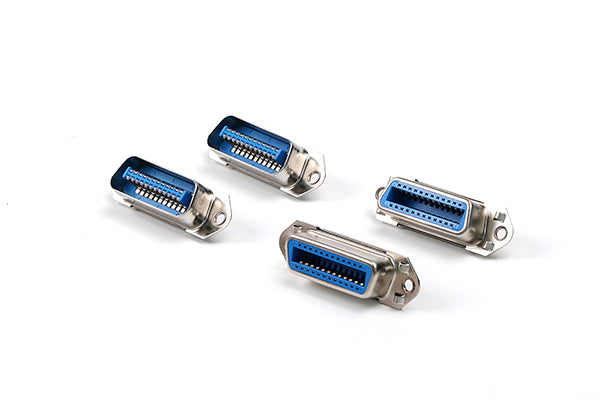Centronic connector
Centronic connector
The Centronic connector is a historical, parallel interface connector that became the industry-standard for connecting printers and other peripherals to computers. It is most famously known as the "IEEE 1284 Type B" connector or, more commonly, the "parallel port connector" or "printer port connector."
Introduced by Centronics Corporation for their dot-matrix printers in the 1970s, its robustness and effectiveness led to its widespread adoption across the entire computer industry. The connector system consists of a 36-pin male "edge" connector (on the cable, which plugs into the printer) and a 36-socket female header (on the printer itself).
For decades, it was the primary method for high-speed (for its time) data transfer between a computer and a peripheral device, carrying data 8 bits at a time in parallel.
Key Features:
-
Type: Parallel interface connector.
-
Pin Configuration: 36 pins arranged in two rows.
-
Gender Convention:
-
Plug (Male): Found on the cable. Features a unique flat blade with contacts along the edge.
-
Receptacle (Female): Found on the printer/peripheral. Contains 36 sprung sockets.
-
-
Mechanical Design: Renowned for its durability and secure connection, often featuring robust metal bail clips or plastic latches for strain relief.
-
Electrical Interface: Carried 8 data lines, plus control lines (Strobe, Busy, Acknowledge, etc.), ground lines, and other signals.
Historical Significance and Legacy:
-
De facto Standard: The Centronic interface defined printer connectivity for over two decades, from the late 1970s through the 1990s.
-
IEEE 1284: The standard was later formalized by the IEEE as IEEE 1284, which defined bidirectional communication and enhanced data transfer modes (ECP/EPP). The original Centronic form factor was designated "IEEE 1284 Type B."
-
Obsolescence: The Centronic parallel port was largely superseded by USB (Universal Serial Bus) in the late 1990s and early 2000s due to USB's faster speed, smaller size, plug-and-play capability, and daisy-chaining support.
-
Modern Use: Today, the Centronic connector is considered legacy technology. It is rarely found on modern computers or printers but may still be encountered in specific industrial, manufacturing, or testing environments where older equipment remains in operation.
無法載入取貨服務供應情況
無庫存
查看完整資訊
